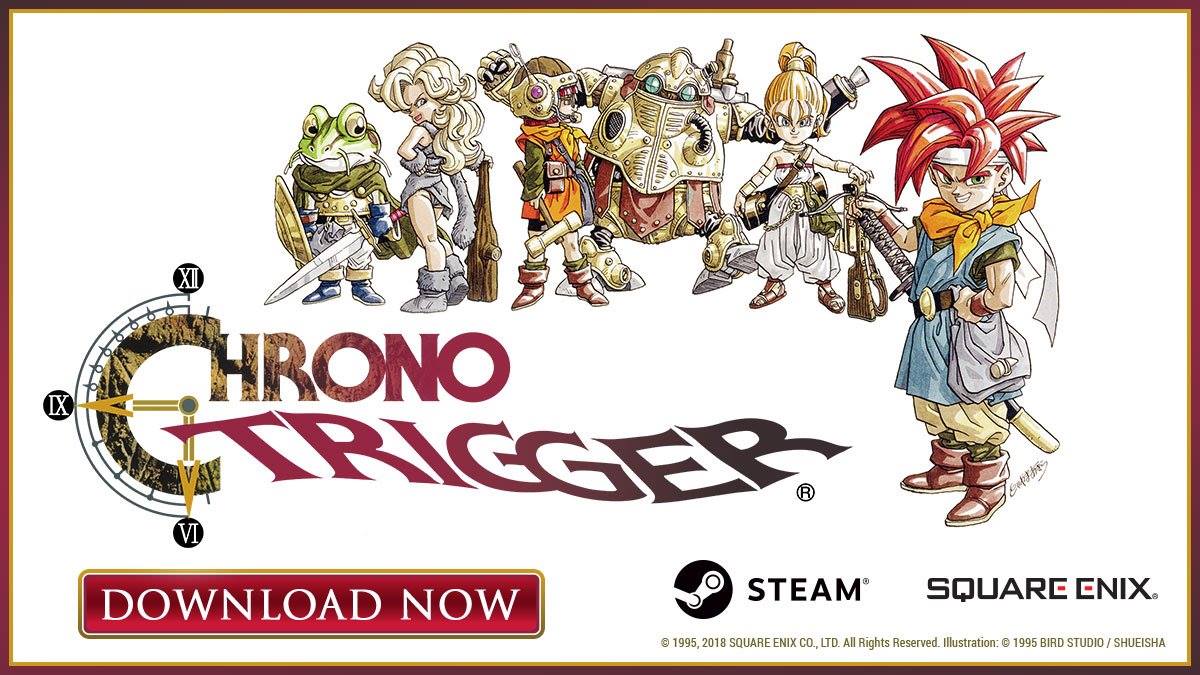It’s 1992. Aboard a plane there are Yuji Horii (Dragon Quest), Hironobu Sakaguchi (Final Fantasy) and Akira Toriyama (Dragon Ball). No, it’s not the intro to some dated joke – but – if it were, the punchline would be Chrono Trigger. Indeed, the uber-classic Squaresoft JRPG was initially thought of by a true dream team of the genre, while on a trip to the United States. Originally, the idea was to release it on the ill-fated Super Nintendo CD-ROM add-on. In the end, however, it came out on an ordinary SNES cartridge, quickly becoming a legend on that platform. Now, 27 years later, is it still worthy of the moniker “cult classic”? Does it stand the test of time?
I’LL BE BACK (IN TIME)
In the kingdom of Guardia, in 1000 AD, everyone’s celebrating the dawn of a new millennium with a huge festival. Two friends, Chrono and Marle, attend a demonstration of a strange machine, by Lucca and her father, which ends up going horribly wrong. All three go back in time, discovering that, somehow, they’ve caused a huge paradox, which they must correct before returning. That’s a basic premise, but soon, the player will discover how much more there is to the story (and time travels). The developers have thought out every twist and turn – and your answers or actions will, several times, greatly affect the future.
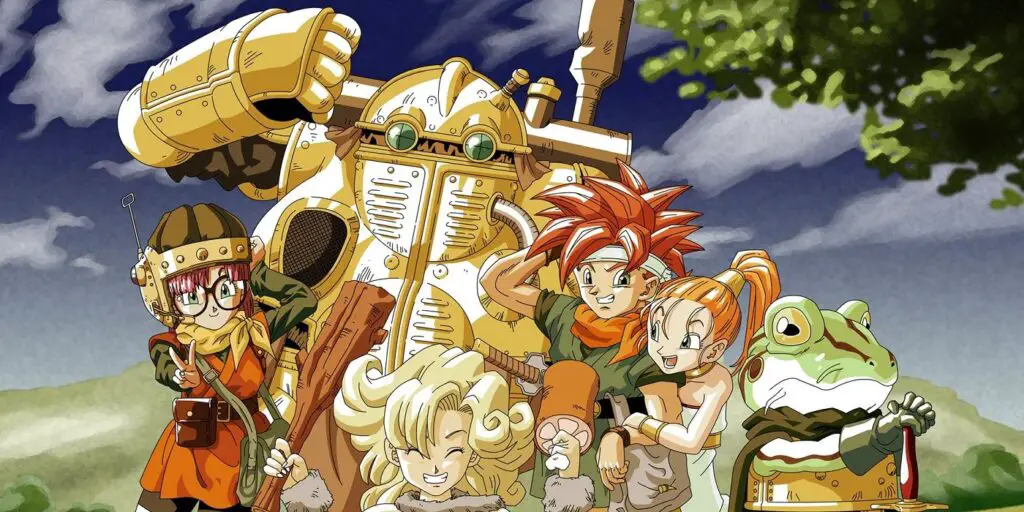
Indeed, the story spans many places – and epochs. From the birth of Guardia, to “the end of time”, a sort of limbo where heroes can rest and find hints. There are so many memorable moments in Chrono Trigger. However, one that’s always stood out to me – without spoiling much – is Chrono’s trial. It’s almost a visual novel-like moment. No combat, just questions – with an incredibly atmospheric view of the court and Chrono being interrogated. Here, the player will realize that every past decision is, in fact, detrimental to his case. Yet, no matter what we do or what we say, in the end we’ll be jailed. Still, it’s an incredibly well-made and entertaining scene, fun to replay over and over.
SOME TURN-BASED, SOME ACTIVE SYSTEMS
The combat sticks to the fundamentals that Square already perfected with Final Fantasy titles. Each character awaits their turn – then decides whether to attack, or use some special power or item. Nothing revolutionary, but as with most Square titles, the system works exactly as it should. Unlike in some past Square titles – and luckily – there are no random fights. The enemies are always on-screen as we explore – so, it’s mostly up to the player whether to grind or avoid combat for a while. Granted, there are some fights we can’t avoid due to enemy placement. Still, overall, Chrono Trigger provides plenty of freedom.
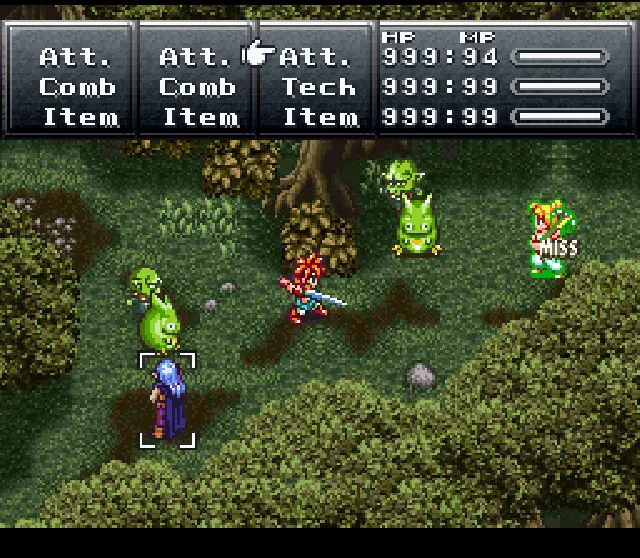
Active Battle System, from the Final Fantasy series, is here as well. This means that time passes even when choosing the next action. It’s actually not bad if one already has special attacks – where two characters work together. It almost makes battles real-time – but there is an option to turn it off. The Active Time Event Logic, on the other hand, was developed just for this game. During a cutscene or a narrative event, the player retains control of Chrono and can still interact with things, thus affecting the situation. Although there aren’t any important moments where this comes into play, it was still an interesting idea. It also – once again – emphasizes players’ freedom. Some elements of the gameplay were definitely inspired by Square‘s 1994 Live A Live.
UNTIL THE END OF TIME
Chrono Trigger is an adventure grandiose in its scope; I believe no other term could accurately describe it. The story does begin like a mostly light-hearted romp with friends, however. That’s especially so in the introduction, with Chrono and Marle running carefree around the fair. However, the narrative soon reveals its complexity. The stakes become much higher. The dramatic changes in the timeline – Chrono, Marle and Lucca are a part of – will uncover many mysterious behind Guardia’s origins. Those that’ll cast doubt on everything we know about the kingdom.
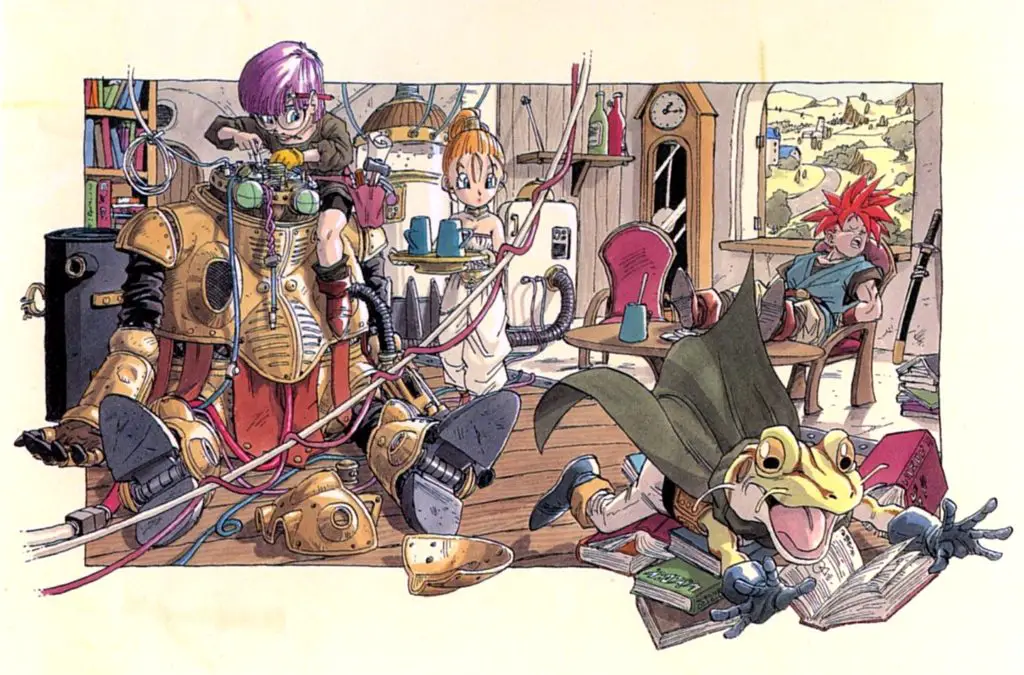
It’s a universe beautifully contained in its shell. A story unafraid to tackle topics such as friendship, family and growing up. Neither is it afraid to change its beat for some somber scenes. Chrono is, however, the usual silent protagonist. Still, the way the control is relented to the player is different from that of a Link (which soon becomes the hero of the realm), a Mario or even a Bartz. Chrono remains a pretty average teenage boy for basically the entirety of the narrative in Chrono Trigger. He just wanted to go out for a stroll with his friends. Instead, he got thrust into this bigger-than-life story of saving an entire kingdom. Rooting for him feels natural, along with the great cast of characters like the loyal Frog.
PLAY ME THOSE SWEET TUNES
The soundtrack almost deserves an article of its own. Every facet of the music is incredible. I still enjoy listening to it at any time of day. From the ominous beating of the clock and the delicate melody of the intro; from the marching drums and solemn trumpets of Chrono’s Theme; all the way to the glacial, sitar-soft sounds of the Palace of Zeal. Also, since it’s a long game, there is a lot of music: the original release of the soundtrack took three CDs.
Yasunori Mitsuda was the lead musician behind the soundtrack. At the time, he was unhappy by how Squaresoft was treating him. Him main motivation in taking this job was to see whether the higher-ups will appreciate him more as the result of it. He drew from a collection of songs he composed over the past two years, seeking to evoke a strange, distant world. He also tried to avoid sticking to a single genre or theme. Needless to say, the success of Chrono Trigger skyrocketed Mitsuda’s career. Since then, he’s been doing an incredible number of soundtracks to games. Among them, well-known RPGs like Xenoblade Chronicles and Soul Sacrifice.
GROWING PAINS
The original Super Nintendo release registered huge sales – but then again, in 1995, the console was on its way out. However, the subsequent PlayStation version (as part of the Final Fantasy Chronicles), which featured animated sequences by Toriyama, sold just as well. The game then got a solid port to Nintendo DS. Along with bonus content from the PS1 version, it also featured various updates, including with translation. Unfortunately, the Windows version, published on Steam in 2018, received negative reviews. Specifically, there was criticism regarding its touchscreen UI, bugs and inadequate control scheme.
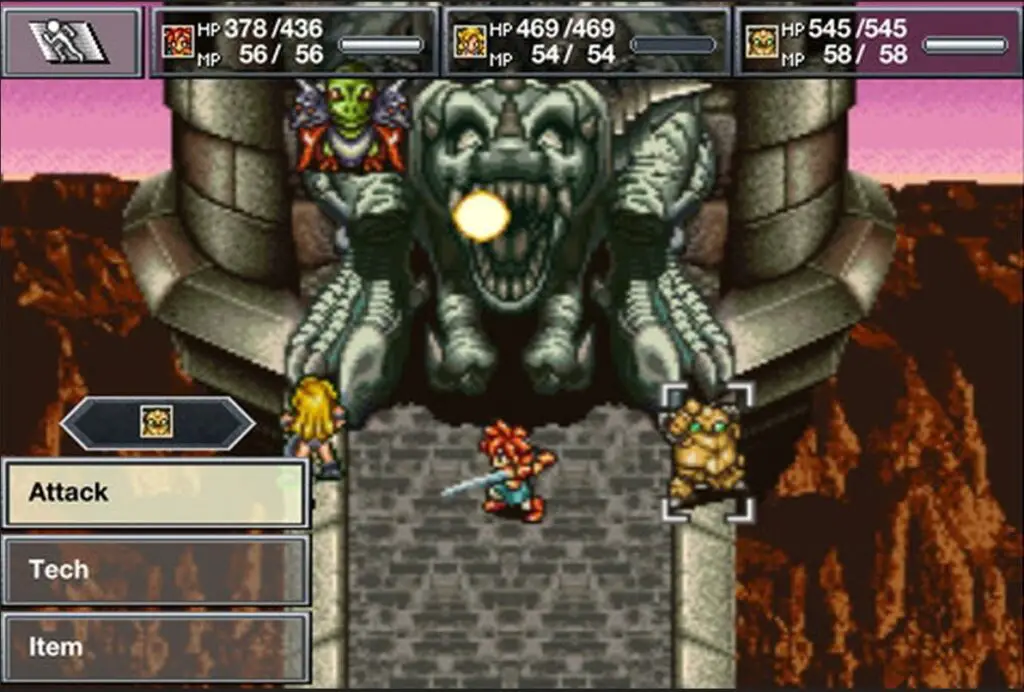
While the situation improved since then, after several patches – overall, I’d still recommend the Nintendo DS version. It’s still the one where players can be sure to get the best experience. The original SNES is, obviously, still mighty fine too. However, the improvements with the English translation will greatly assist in understanding the story and the characters’ motivations.
MEMORIES OF GUARDIA
Ironically, for how much praise I’ve given it, I’ve only finished Chrono Trigger once; which – as many fans know – means missing out on its multiple endings. To my defense, I have played it more times than I care to count. Still, the first time I put my hands on the game, several years had already passed since its release (around 3 or 4). This was due to the fact I didn’t have a Super Nintendo at the time. Regardless, everyone continued pestering me, saying it was a cult classic that I couldn’t miss out on. So, for me, writing about it isn’t as simple as going back to a dear childhood memory, or a sort of nostalgic look at a game of the past – because this really isn’t how Chrono Trigger feels to me.

However, the way it juxtaposes memories and events of the past, along with a surprisingly strong modular narrative, does make it feel so; plus, naturally, a soundtrack that tugs at one’s heartstrings. Leading Chrono through the Fair, or meeting Frog – these are moments that have stuck with me for many years. Every time I go back and revisit them, it really is like seeing old friends. Every bit in Square‘s game works beautifully, constructing one of the best RPGs of its era – one that anyone even remotely interested in the medium of video games should play. The main thing it did for me, however, was that – being the first JRPG I’ve ever played – it finally converted me to the genre. It made me realize the beautiful stories and characters I’ve been missing out on and, since then, I haven’t looked back.


